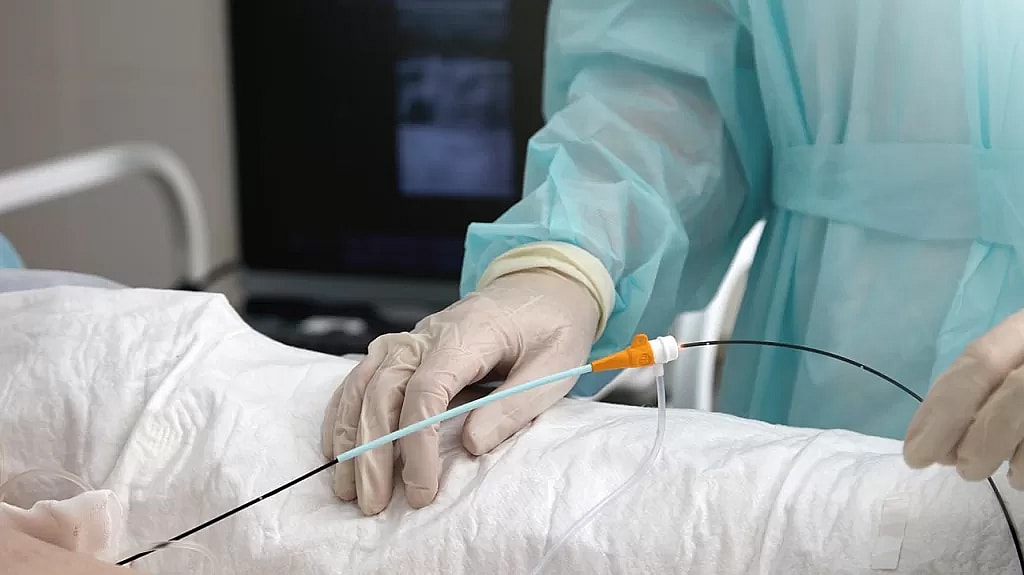Thrombectomy and Thrombolysis: Understanding Stroke Treatment Options
Thrombectomy and thrombolysis are two medical procedures doctors use to treat blood clots. The one you need will depend on your circumstances.

Aleksandr Zyablitskiy/Getty Images
The primary difference between the two treatments is that thrombectomy involves surgically removing a blood clot, whereas thrombolysis involves administering medications to dissolve a clot.
In some cases, your doctor might use both.
This article outlines the conditions that thrombectomy and thrombolysis can help treat and what to expect.
What are they used for?
Thrombectomy and thrombolysis are medical procedures to treat blood clots, or “thrombi.”
Doctors may use one or both of these treatments to treat conditions such as:
- Deep vein thrombosis (DVT): This is a blood clot in a major vein, such as
- those in the lower leg, thigh, or pelvis.
- Pulmonary embolism (PE): This is a blood clot that blocks blood flow through an artery in the lung. It happens when a DVT fragment breaks loose and travels through the circulatory system to the lung.
- Ischemic stroke: This is a blockage within
- a blood vessel that supplies part of the brain.
- Coronary thrombosis: This is a blood clot within
- a blood vessel of the heart that can lead to a heart attack.
The above conditions are medical emergencies that require urgent treatment.
Thrombectomy
Mechanical thrombectomy—aalso called thrombectomy—iis a minimally invasive surgical procedure to remove a blood clot.
A healthcare professional will make a small incision in your groin and insert a long, thin, flexible device called a catheter. They’ll then pass special instruments through the catheter to grab or suck out the clot.
The procedure is relatively quick and usually takes 1-3 hours
Thrombolysis
Thrombolysis uses clot-busting medications to help dissolve blood clots. These medications include:
- streptokinase
- alteplase
- reteplase
- tenecteplase
- urokinase
- prourokinase
- anistreplase (APSAC)
You can receive thrombolytic agents through an intravenous (IV) line. Alternatively, they may first insert a catheter that allows them to administer the medication at the exact site of the clot.
Key differences
The primary difference between thrombectomy and thrombolysis is how they remove clots. Thrombectomy involves surgically removing the clot, while thrombolysis involves administering medications to dissolve the clot.
In some cases, doctors may perform both procedures.
Risks and complications
Like all medical procedures, there are risks with thrombectomy and thrombolysis that can cause complications.
Thrombectomy risks and complications
Some potential risks and complications of thrombectomy include:
- brain hemorrhage, which may occur during thrombectomy treatment for ischemic stroke
- blood vessel perforations or tears
- hematomas in the groin or abdomen
- development of another blood clot
During a thrombectomy, there is also a risk that part of the blood clot may break off and travel to another area within the body, such as the heart or lungs.
Thrombolysis risks and complications
Thrombolytic agents can cause potentially dangerous side effects, including:
- bleeding
- high blood pressure
- angioedema, which is swelling beneath the skin
- allergic reaction
- anaphylactic shock
- heart arrhythmias, when a doctors uses them to treat coronary thromboses
The most common complication of thrombolytic treatment is bleeding. Risk factors that may increase your risk of bleeding include the following:
- advanced age
- uncontrolled high blood pressure
- recent stroke
- recent surgery
- increased susceptibility to bleeding or bruising
- use of anticoagulant medications, which some people refer to as blood thinners
Q: What conditions are thrombectomy and thrombolysis used for?
A: Thrombectomy and thrombolysis are used to treat blood clots, or “thrombi,” in conditions such as deep vein thrombosis (DVT), pulmonary embolism (PE), ischemic stroke, and coronary thrombosis (heart attack).
Q: What is a thrombectomy?
A: A thrombectomy is a minimally invasive surgical procedure to remove a blood clot. A catheter is inserted through a small incision, and special instruments are passed through to grab or suction out the clot.
Q: What is thrombolysis?
A: Thrombolysis involves administering clot-busting medications like alteplase, streptokinase, or tenecteplase intravenously or directly at the clot site to help dissolve the clot.
Q: What is the primary difference between thrombectomy and thrombolysis?
A: The primary difference is that a thrombectomy surgically removes the clot, while thrombolysis uses medications to dissolve the clot.
Q: What are some risks and complications of a thrombectomy?
A: Risks of a thrombectomy include brain hemorrhage, blood vessel perforation, hematomas, and potential clot migration to other areas like the heart or lungs.
Q: What are some risks of thrombolysis?
A: The risks of thrombolytic medications include bleeding, high blood pressure, angioedema, allergic reactions, arrhythmias, and complications, which are higher in those prone to bleeding.
Q: Can both procedures be used together?
A: Yes, in some cases, doctors may perform both a thrombectomy and thrombolysis to treat a blood clot.
The bottom line
Doctors may use thrombectomy or thrombolysis to treat blood clots. A thrombectomy is a minimally invasive surgery that allows doctors to remove a clot. Thrombylosis involves administering clot-busting medications to dissolve a clot.
Doctors may use either or both treatment approaches to treat deep vein thrombosis (DVT), pulmonary embolism (PE), and ischemic stroke.
A thrombectomy can cause complications, such as blood vessel perforations or tears, which may lead to hemorrhage. Thrombolysis agents can also cause adverse effects like bleeding, high blood pressure, and allergic reactions. However, the risk of not treating a clot often outweighs the risk of treatment.








Differences between thrombectomy and thrombolysis
Differences between thrombectomy and thrombolysis
Differences between thrombectomy and thrombolysis
Differences between thrombectomy and thrombolysis
Differences between thrombectomy and thrombolysis